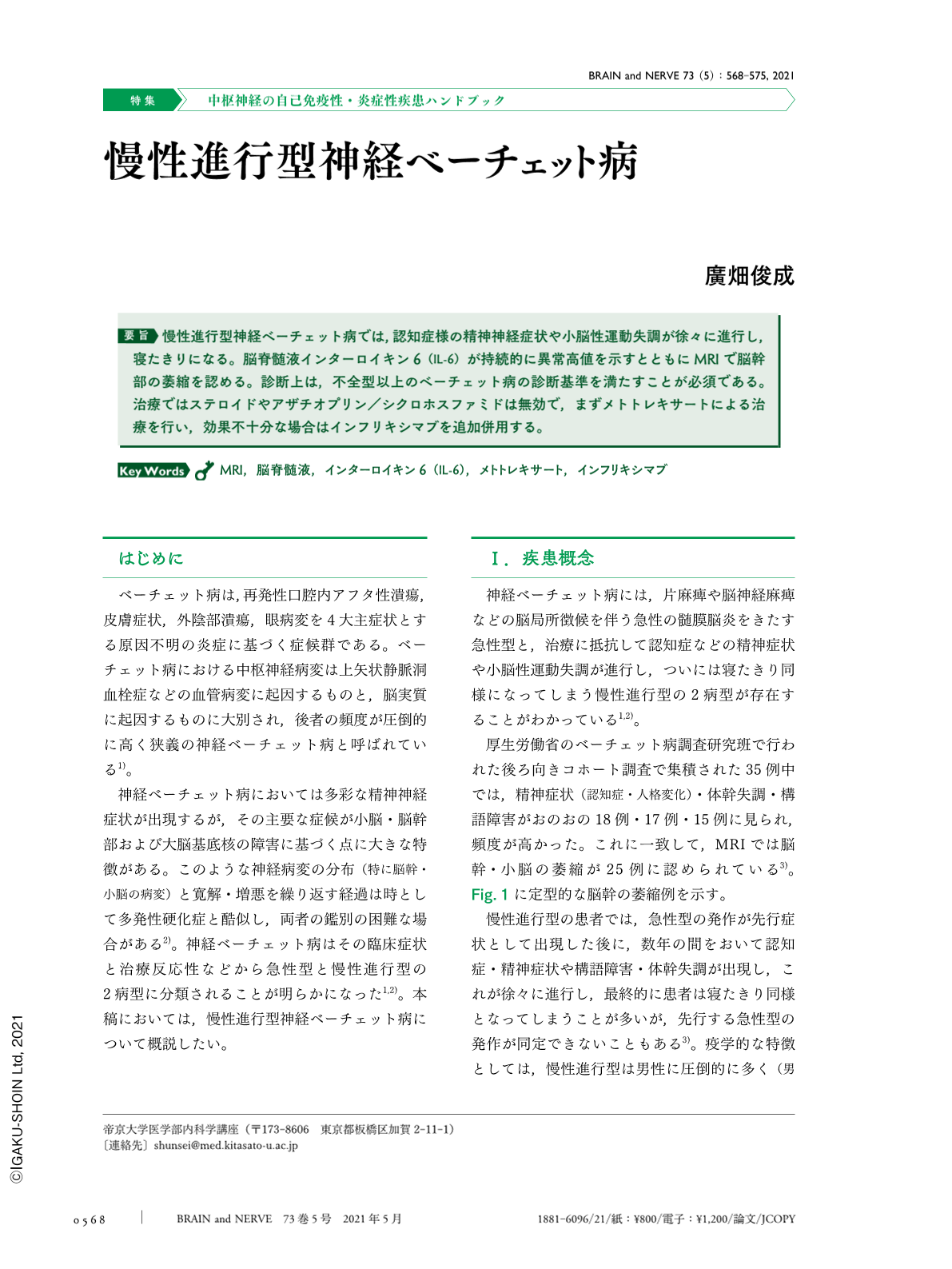Japanese
English
- 有料閲覧
- Abstract 文献概要
- 1ページ目 Look Inside
- 参考文献 Reference
慢性進行型神経ベーチェット病では,認知症様の精神神経症状や小脳性運動失調が徐々に進行し,寝たきりになる。脳脊髄液インターロイキン6(IL-6)が持続的に異常高値を示すとともにMRIで脳幹部の萎縮を認める。診断上は,不全型以上のベーチェット病の診断基準を満たすことが必須である。治療ではステロイドやアザチオプリン/シクロホスファミドは無効で,まずメトトレキサートによる治療を行い,効果不十分な場合はインフリキシマブを追加併用する。
Abstract
Neuro-Behçet's disease (NB) is classified into acute and chronic progressive types. Acute NB occurs as acute meningoencephalitis with focal lesions, presenting with high-intensity areas on T2-weighted images or flat images on magnetic resonance imaging (MRI). Chronic progressive NB is characterized by intractable, slowly progressive dementia and ataxia with progressive brain stem atrophy on MRI. The most important feature of chronic progressive NB is persistent elevation of cerebrospinal fluid (CSF) IL-6 levels. The progression rate of the brain stem atrophy has been shown to be closely correlated with integrated CSF IL-6. For the correct diagnosis of acute or chronic progressive NB, it is mandatory to confirm the diagnosis of Behçet's disease. Regarding treatment, all of corticosteroids, cyclophosphamide, and azathioprine are ineffective to treat chronic progressive NB. Low-dose methotrexate (MTX) is effective in decreasing CSF IL-6 levels without promoting the progression of neuropsychological manifestations. Infliximab has a beneficial effect in patients with inadequate response to MTX. Recently, clinical guidelines were established for the management of acute NB and chronic progressive NB, which is helpful for routine clinical practice.

Copyright © 2021, Igaku-Shoin Ltd. All rights reserved.


